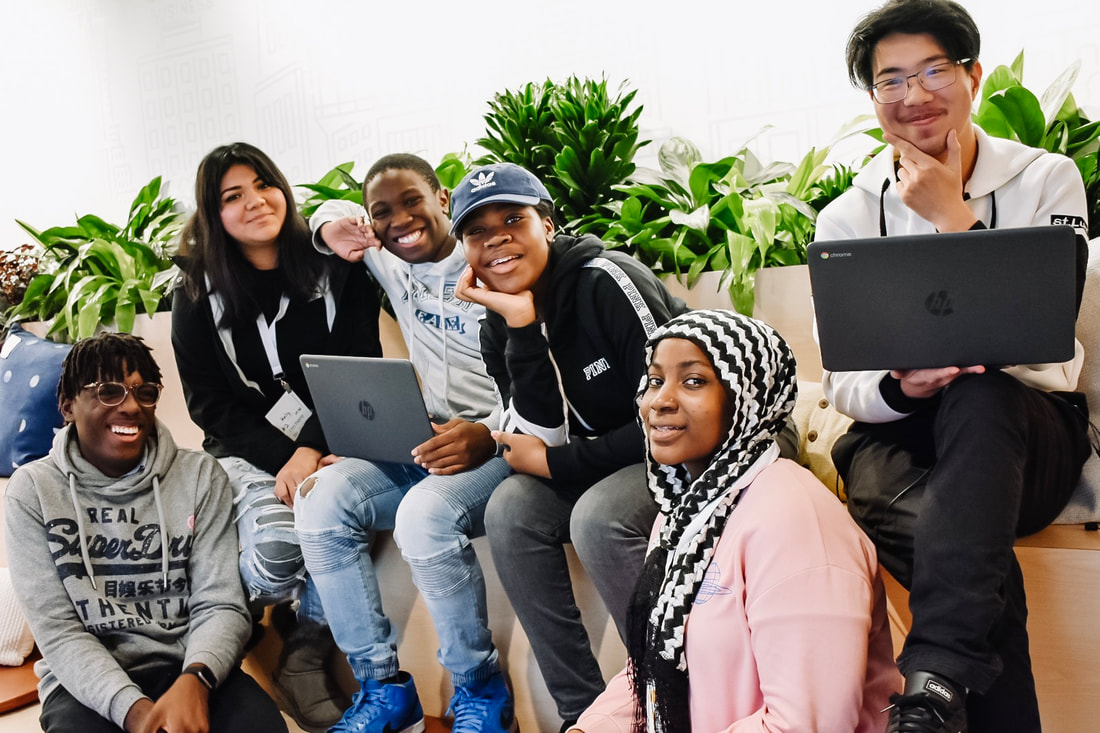In Episode 17 of the Disruptors for Good podcast I speak with Jessica Santana, the Co-founder and CEO of America On Tech on why she is using her journey in technology to bring low income students the skills needed to change their future.
Listen to more Causeartist podcasts here.
Jessica is a graduate of Syracuse University with degrees in Accounting and Information Technology. In 2014, with Evin Robinson, she co-founded New York On Tech(now America on Tech), an organization that creates pathways for students into degrees and careers in tech.
Her work has been featured in media outlets such as Forbes, CNN and Huffington Post and have forged partnerships that reach students in all five boroughs of NYC. Jessica has spoken to over 50 different audiences including TechCrunch, Google for Entrepreneurs, the White House, and been named a Forbes 30 Under 30, Wells Fargo Millennial Activist, Ashoka / American Express Emerging Innovator, and a World Economic Forum Global Shaper.
Prior to NYOT, Jessica worked as a technology consultant for global brands that include Accenture and Deloitte. She also completed the JPMorganChase Global Enterprise Technology Leadership program and was recognized as a Deloitte Future Leaders Apprentice and a Morgan Stanley Emerging Leader.

About America on Tech
America On Tech (AOT) envisions a world where young people of color across the country have equitable access to compete fairly for opportunities in the technology sector. America on Tech’s mission is to decrease the racial wealth gap by increasing equitable pathways for underestimated students into degrees and/or careers in technology.
Interview Transcript
00:00
Grant: What’s up everybody? This is Grant at Causeartist. Today we are talking with Jessica Santana. She’s the co-founder and CEO of America On Tech. We recorded this in New York at the Teach For America headquarters.
If you live in New York, it’s an amazing place, filled with creativity and an innovative educational atmosphere. It was great to talk to Jessica and see what they’re up to. America On Tech’s mission is to prepare the next generation of technology leaders emerging from NYC.
They provide low-opportunity students with the resources necessary to pursue careers and degrees in technology. Their flagship program is the Tech Flex Leaders Program, an immersive experience for New York high school students offering access to academic, professional, and leadership opportunities in technology.
Students are paired with mentors working in high-tech industries to help them build their confidence and leadership skills.
Their work has been recognized by TechCrunch, Black Enterprise, and the Huffington Post. We talk about Jessica’s history, her path to founding America On Tech, and how she came from a low-income family to get a job in technology, changing her family’s life.
She wanted to create opportunities for other kids in similar situations. Enjoy the conversation and have a great week.
Let’s start with your path to becoming the co-founder of America On Tech and its overall vision and mission from the beginning.
02:33
Jessica: I was the first person in my family to graduate from college. I got my degree in technology and started my career in the industry. Six months after graduation, my family’s household income increased significantly because of my job. It made me think about economic mobility for women and people of color from marginalized backgrounds in innovation careers.
I also wondered how to get more people who look like me into this industry. In 2014, my co-founder and I were at a Starbucks, and I was venting about a microaggression I experienced.
He suggested we do something about it. We created a blueprint on napkins and asked friends in Teach For America if their schools would partner with us. We got 20 students quickly, built the curriculum, and piloted the program. Six months in, we received our first investment, allowing us to take the work full-time.
04:52
Grant: What was your path to college and a tech degree?
05:06
Jessica: I grew up in a low-income community in Brooklyn and went to public schools. No one in my family had graduated from college or worked in corporate America. I got my first computer in middle school and taught myself to code with MySpace. However, no one told me it was an employable skill.
I initially majored in accounting but realized I could monetize my tech skills by freelancing for nonprofits. I pivoted to get my Master’s in technology at Syracuse University, specializing in cybersecurity, digital strategy, and project management.
07:01
Grant: After creating the idea on napkins, what were the next steps?
08:05
Jessica: We were scrappy, using Google Drive to write down ideas and create spreadsheets. We realized we needed to fundraise, so we contacted someone on LinkedIn who worked at Etsy to host a fundraiser.
We raised about $10,000 through ticket sales on Eventbrite. Initially, it was just about providing opportunities, not a full strategic plan.
10:18
Grant: You got into a fellowship that helped you take the work full-time. How did that happen?
10:36
Jessica: We got into Camelback Ventures, which seeds education entrepreneurs. They gave us $50,000 with the condition that we take the work full-time. I left my tech job to try this, and a few months later, my co-founder joined full-time as well.
11:57
Grant: Can you tell us more about your co-founder and how you met?
13:40
Jessica: Evan and I met in 2009 at an Ernst and Young Leadership Conference. We realized we lived five blocks apart in Brooklyn but hadn’t met until college.
We bonded over shared experiences and a desire to change our communities. He has been instrumental in our achievements over the last five years.
15:12
Grant: How has the program evolved since it started?
15:42
Jessica: We started with weekly workshops on various tech topics. Based on surveys, we realized students wanted deeper technical skills. We created a nine-month curriculum teaching front-end and back-end web development, followed by mobile development.
Students then do paid internships with corporate partners. We also have a shorter, ten-week course called Tech 360, which serves as a pipeline into the nine-month program. Recently, we added a non-engineering course in user experience design.
19:32
Grant: Is the program still off-site, or is it now embedded in schools?
21:41
Jessica: It happens in various ways now. We have out-of-school time programs embedded at companies, programs within schools, and partnerships with other nonprofits. The content stays the same, but the delivery varies based on the partnership.
23:13
Grant: How has it been working with schools?
24:38
Jessica: It depends on the leadership of the school and the district. Some are fully on board, providing resources and support. Others need help understanding the first steps. We come in as the delivery partner, providing expertise.
26:42
Grant: How many students do you work with annually?
27:05
Jessica: We work with about 1,000 students per year through various partnerships and programs. To date, we’ve worked with over 1,500 students. This coming school year, we’ll work with 1,000 students annually.
27:41
Grant: What does success look like for America On Tech?
29:14
Jessica: In the short term, success is students mastering skills, getting internships, and enrolling in college or technical education programs. Long term, we aim for students to obtain careers in the industry and give back to their communities. This is the first year we’ll have a graduating class of seniors in college, so we’re still measuring long-term success.
33:31
Grant: Is there an opportunity to create a curriculum for adults who missed out on learning these skills?
34:29
Jessica: Yes, there are adult coding camps and vocational trainings, but most are on the for-profit side. We’re exploring how to serve this population, but it’s a big lift.
35:38
Grant: What goes into choosing another city to expand to?
37:54
Jessica: We prioritize factors like student need, diversity, volunteer rates, transportation, and charitable giving. We rank cities based on these factors and choose one of the top five cities to pilot. The highest-ranking city was New York, confirming we started in the right place.
38:11
Grant: How often do you update the curriculum to keep up with technology changes?
39:08
Jessica: We update the curriculum every year, collecting feedback and leveraging observations to develop new content. It’s a process, but it’s necessary to stay competitive.
40:35
Grant: How has fundraising been for America On Tech?
42:23
Jessica: We focus on multi-year partnerships with companies, foundations, and individuals. We also charge for services to keep programs free for students. We receive funding from public sector agencies, but most of our public sector funds come from earned revenue rather than grants.
44:25
Grant: How has working with organizations like Teach For America helped you?
44:56
Jessica: Teach For America provides a great co-working model for local nonprofits. We’ve also partnered with organizations like General Assembly and Google. It’s been a collaborative effort, and we know we can’t do this work alone.
47:02
Grant: What advice would you give to someone wanting to start a tech nonprofit?
48:00
Jessica: Design your program with the users in mind. Listen to the true pain points of young people and create programs that solve those issues. Don’t assume you know what they need—ask them and build based on their feedback.
49:17
Grant: What were some of the pain points students mentioned?
49:32
Jessica: Lack of mentorship, opportunities for paid internships, and deep technical skills. We address these by developing their social currency in the industry, pairing them with employer partners, and providing high-quality content that allows them to create product-ready applications.








